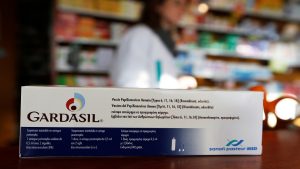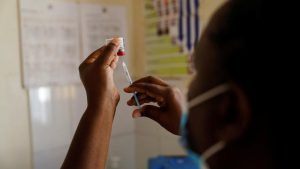Attempts to establish a cervical cancer-free generation, using a preventative healthcare approach – rather than curative – through immunisation, is a glimmer of hope for the future of young women in South Africa.
However, attempts to achieve this goal are confronted by absenteeism and vaccine hesitancy which remain persisting barriers to delivering a lifesaving vaccine to young girls aged 9 and older in public schools nationally.
While the country remembers the struggles of the women of 1956 this women’s month, South Africa continues to grapple with a rapidly increasing rate of cervical cancer every year. According to the Cancer Association of South Africa (CANSA), cervical cancer is the second most commonly diagnosed cancer in women – preceded by breast cancer. More alarmingly, CANSA says it is the leading cause of cancer-related deaths in women across the country.
“South Africa has a population of 21.3 million women aged 15 years and older who are at risk of developing cervical cancer. Current estimates indicate that every year more than 11 000 women are diagnosed with cervical cancer and 6 000 of them die from the disease” says Lorraine Govender, CANSA’s Health Promotion National Manager.
Meanwhile, data by the World Health Organisation (WHO) mirrors the severity of cervical cancer prevalence seen in South Africa. Statistics by WHO rank cervical cancer as the fourth highest cancer affecting women worldwide, accounting for over 300 000 deaths globally in 2020.
What is cervical cancer, what is causing it and who is at highest risk?
Cervical cancer is a type of cancer that is found in the cervix; which is the narrower and lower end of the uterus. According to WHO, the cause of cervical cancer is attributed to mainly strains 16 and 18 of the Human Papillomavirus Virus, commonly referred to as HPV.
HPV is transmitted from person to person mainly through close skin-to-skin contact and through sexual intercourse. These particular types of HPV are known to cause severe cervical cancers.
Govender explains, “Cervical cancer is the first most frequent cancer among women aged 15 and 44 years of age, now about 3.2% of women in the general population are estimated to harbour cervical HPV 16 /18 infection at a given time and 64.2% of invasive cervical cancers are attributed to HPV 16 or 18, so it’s a huge concern among women.”
CANSA sites scientific research studies have proven that cervical cancer is a vaccine-preventable disease in which the efficacy of the HPV vaccine is significantly higher when administered to young girls between 9 -14 years of age (adolescent girls) who are not sexually active – meaning those who have no prior pre-exposure to HPV through sexual intercourse.
In his 2010 State of the Nation Address, former President Jacob Zuma called for the government’s reinstatement of health programmes in public schools in South Africa.
Officially referred to as the Integrated School Health Programme (ISHP), it sought to introduce new innovative initiatives and scale-up and strengthen existing school health services. A programme of this nature entailed a close multi-sectoral approach co-led by a collaboration of the National Departments of Health, Basic Education and Social Development.
Heeding the call made in 2010, the year 2014 saw the official introduction of HPV vaccinations in schools for 9-year-old girls in the country. The launch of this programme was spearheaded by the then Minister of Health, Dr Aaron Motsoaledi as part of the ISHP.
At the centre of the school health programme is the goal of providing specialised tangible deliverables that are aimed at children to intern, and advance their developmental well-being as well as learning outcomes. In an effort to reduce the occurrence of cervical cancer among women in South Africa, the HPV vaccination in schools programme is a preventative measure to protect young girls from developing the disease in the future.
The HPV vaccine is a 2-dose jab, administered 5 to 6 months apart. Statistical data provided by the National Department of Health indicates that over 3 million girls have been vaccinated since the inception of this programme in 2014.
Quick Statistical update: how has the HPV vaccination uptake been?
| over 3 million girls vaccinated | since its launch in 2014 |
| 3 167 266 | total number of 1st doses administered since 2014 |
| 2 313 627 | total number of 2nd doses administered since 2014 |
[Data provided by the National Department of Health (NDoH) taking into account campaign deferment in Sep/Oct 2020 due to Covid-19 school closures]
Barriers to advancing annual HPV vaccination uptake in schools
With the aim to reach 80% of girls and 80% of schools with grade 5 girl learners, the goal, in reality, is proving ambitiously too high. According to the National Department of Health (NDoH), the implementation of the programme encounters persisting and reoccurring challenges. These bottlenecks are posing a threat to current efforts to prevent cervical cancer incidence in the country by protecting young girls from HPV infection through immunization.
There are several challenges that are barriers to the implementation of the vaccine rollout. However, more glaringly is the issue of vaccine hesitancy which subsequently leads to a noticeable lack of consent from the parents and guardians of the learners. Another contributing factor is the high rate of absenteeism at schools, particularly on scheduled vaccination days.
Deputy Director of the National Integrated School Health Programme at the National Department of Health, Feni Motshwane, confirms that persistent reluctance from parents to consent and the reoccurring patterns of high absenteeism on vaccination days are affecting the department’s cervical cancer prevention efforts.
“The main challenge is around the absence of consent forms which is addressed by giving information but also we have seen absenteeism because what happens is that the school health nurses when visiting the schools will set up appointments and the learners will know that on a certain or specific day the team will be coming to provide or vaccinate them then they will not attend school” says Motshwane.
Mitigation and way forward
The National Department of Health says reluctance and widespread scepticism of the HPV vaccine has now also lead to parents withdrawing consent forms prohibiting their children from getting the second dose. This is done with no further explanations or reasons given to school health authorities by the parents.
Misinformation, myths, fear, minimal trust and lack of access to credible information are the main contributing factors that are driving the public perceptions against HPV vaccination further. As a result, this is threatening the success rate of the programme.
These developments are a clear indication that public education and communication need to be strengthened if South Africa hopes to realise its goal of eliminating cervical cancer – as set out in WHO’s Global Strategy towards the Elimination of Cervical Cancer as a Public Health Problem 2020-2030.
However, it is not all doom and gloom, Motshwane says the department is working tirelessly to mitigate these challenges. “Measures that we put in, we look at the availability of consent forms, if the consent forms are there then the school health nurses or the HPV vaccination teams will then visit the school more than once to ensure that all those eligible girls who have consent forms are vaccinated but with the issue of consent forms, we deploy teams like your health promoters, the school health nurses to address parents at parents’ meetings. We also work with the school governing bodies and the principles and the teachers to also advocate for parents to sign consent forms for their children to get vaccinated because giving them information that the HPV vaccination will actually protect the incident of cervical cancer in future, then we see that parents and caregivers are gaining that trust and signing the consent forms,” Motshwane elaborates.
Although women’s month is drawing to a close in just a few days, the significance of continual policy development coupled with tangible and accessible services for the advancement of women’s sexual and reproductive health remains a critical public health priority.
The debunking of myths, increasing public education through meaningful community and learner engagements are among a few mitigations that if implemented more rigorously, can yield outcomes that can give young girls a fighting chance against cervical cancer.
September 2022 kicks off with the commencement of the second jab at public schools across the country of the 2-dose HPV vaccine. The National Department of Health says although 475 719 grade 5 girls were recorded in 2022 – only 392 772 girls (82%) were vaccinated with the first dose in February/March earlier this year, with signed parental consent forms in hand.
September also marks cervical cancer awareness month. -Reporting by SABC News Zandile Myeza






